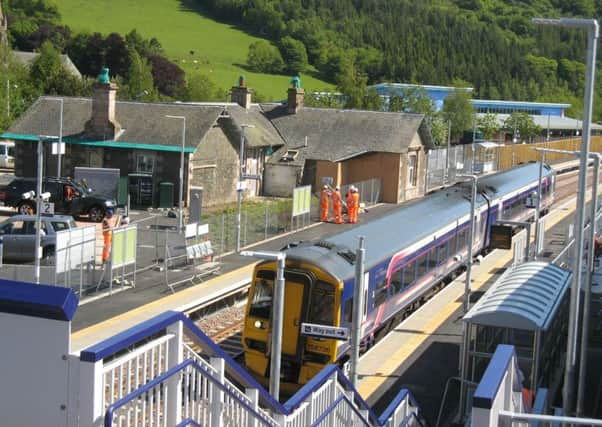Transport matters: Railway must make itself pay


This is particularly significant, as the Scottish Borders has been without an operational station since the line was closed on January 6, 1969, 46½ years ago, after a comparatively short period of opportunity for people to object.
The grounds of objection were effectively only hardship, which was countered by ensuring the provision of ‘alternative bus services’ at every station. These did not last long. Railway passengers do not often consider bus services to be an adequate alternative to the trains, especially as they take quite a lot longer on the journey and cannot carry heavy luggage or bicycles, but evidently these disadvantages were not considered hardship. Very few passengers used them and most were soon withdrawn.
Advertisement
Hide AdAdvertisement
Hide AdRe-opening a railway, or even just a station, is a very much longer process than closing it . The first requirement is to establish a ‘business case’. This depends on the number of people expected to use the trains, and any other financial benefits which can be expected. These figures cannot be plucked out of the air – they have to be based on real solid, provable expectations. Nevertheless, there have been several reopenings, mostly in Scotland, where a business case sufficiently robust to convince the politicians has been established.
In most cases the number of passengers expected in the first twelve months in the business case, has actually been achieved within the first three or four months of opening.
This re-assertion of the British attitude to public transport (that it is a business), is in contrast to the attitude in most other parts of the world, where it is regarded as a service. It is demonstrable that the existence of good public transport benefits the wider economy, and not only the people who use it.
This is more difficult to quantify in terms of hard cash, but it opens up employment opportunities and has enormous social benefits.
Advertisement
Hide AdAdvertisement
Hide AdMany of the railway closures fifty years ago would not have happened if the government had been more far-sighted. As it was, the only criterion used was profitability. The Prime Minister, Harold Macmillan, simply wanted to stem the losses made by the railways without taking into account any of the indirect economic and social benefits that accrued from their existence.
He appointed as Minister of Transport a man whose business was to build roads, particularly motorways, and gave him the responsibility to adjudicate on railway closures. He in turn appointed a brilliant economist with no knowledge of transport, and gave him a bus map which showed that virtually no communities would be left isolated if there were no railways.
The result was inevitable. Only the long-distance and heavily-used commuter routes would remain. Wayside stations on the main lines would be closed. It all happened so fast that opposition was not organised sufficiently well or in time to stop it.
The philosophy was that even the long-distance services would decline as the motorway network developed, so the British Railways Board struggled for years to obtain approval for developments such as main-line electrification.
Advertisement
Hide AdAdvertisement
Hide AdThe Board was so cash-strapped that it could not carry out the full maintenance regime which a busy railway required. It was not until the turn of the century that the government finally admitted that perhaps people really did want their railways.
The number of passengers has risen 70% in a decade. It was 2009 before Lord Adonis, the Secretary of State for Transport, kick-started the developments which are now gathering pace in England.
As with so many things, Scotland has been ahead of the game.
Lines and stations have been re-opened and electrification is taking place in the central belt. Many improvements have taken place in Scotland and continue to do so.
Advertisement
Hide AdAdvertisement
Hide AdWhich brings us to Reston. While the Borders Railway will bring operational stations back into the central Scottish Borders this year, the eastern Borders will benefit from the re-opening of Reston station on the East Coast Main Line within the next year or two. It was intended to be next year, but it has been delayed until more suitable trains for use on the main line are available in 2018.